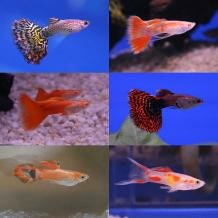Topic: “Broken jaw” – mandibular and maxillary jaw joints
At first sight having a jaw with a joint seems a contradiction in terms, but such exist and not only are obviously functional, but needless to say convergent.
 Effective feeding depends on both dentition and a strong jaw, and at first sight having a jaw with a joint seems a contradiction in terms, but such exist and not only are obviously functional, but needless to say convergent. Not as silly as it looks.
Effective feeding depends on both dentition and a strong jaw, and at first sight having a jaw with a joint seems a contradiction in terms, but such exist and not only are obviously functional, but needless to say convergent. Not as silly as it looks.
Fish with intramandibular joints
Fish feed by a number of methods, although suction feeding is especially prevalent. However, in fish, especially those that graze either attached or entrusting food (including of course those that have independently evolved agriculture), a particular feature to assist in this process is so-called intramandibular bending which usually manifests itself by the formation of an articulation in the mandible and situated between the angular/articular bone and the dentary.  And it is convergent, having evolved multiple times. One such example is the poeciliid fish, whilst in the group of coral fish known as the squamipinnes (they include the angelfish) it has evolved between 3 and 5 times.
And it is convergent, having evolved multiple times. One such example is the poeciliid fish, whilst in the group of coral fish known as the squamipinnes (they include the angelfish) it has evolved between 3 and 5 times.
Snakes with intramaxillary joints
One of the greater peculiarities of the Round Island Boa (Casarea dussumieri), an endangered species which lives on Round Island, near Mauritius, is that the maxilla of the jaw is jointed. This intramaxillary jaw appears to be unique to this snake (and an extinct relative on Mauritius itself), and is evidently an adaptation to deal with hard-bodied prey in the form of lizards, such as geckos. This snake does, however, have a series of striking behavioural convergences to a limbless lizard known as Lialis.
Cite this web page
Map of Life - "“Broken jaw” – mandibular and maxillary jaw joints"
https://mapoflife.org/topics/topic_427_broken-jaw-mandibular-and-maxillary-jaw-joints/
November 29, 2020

